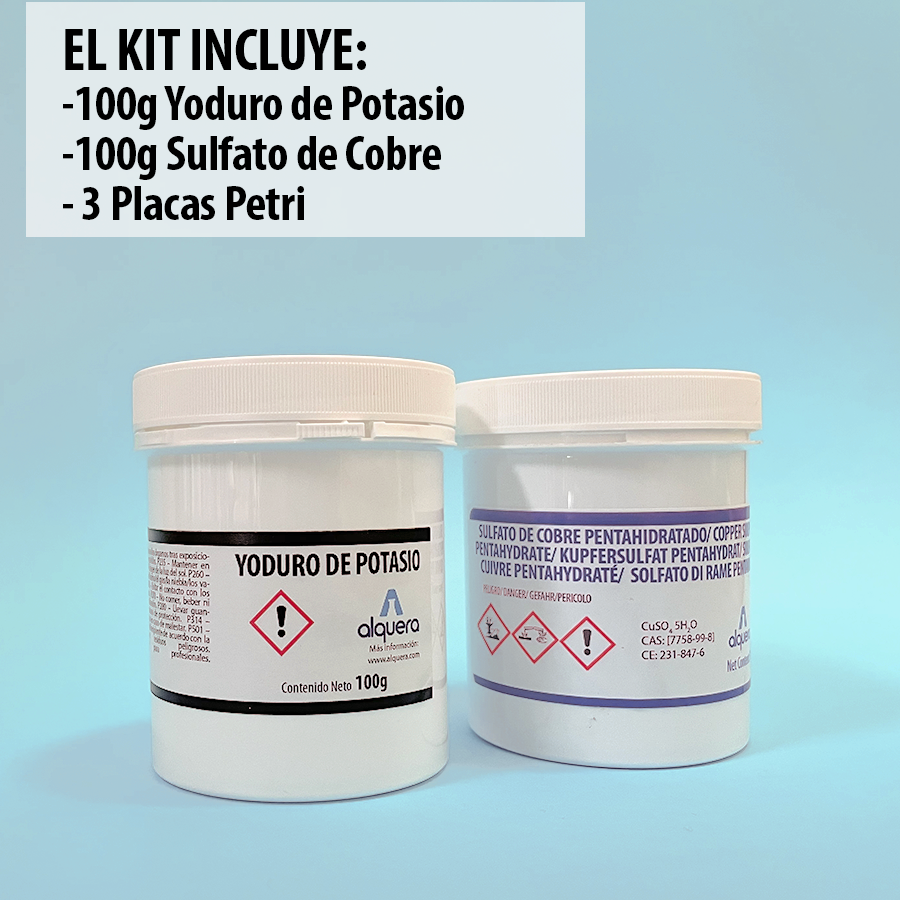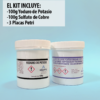The fingerprint detection kit is a kit with which you will have the chemical components to be able to carry out the practice of fingerprint detection.
CONTENT OF THE FINGERPRINT DETECTION KIT
The kit includes
- 100g Copper Sulphate
- 100g Potassium Iodide
- 3 Petri dishes
STEP BY STEP FINGERPRINTING
We show you the detailed step-by-step in video
- Take half a spoonful of potassium iodide and place it on the petri dish.
- Take the same proportion of copper sulphate and mix it on the petri dish.
- Add a few drops of water to promote mixing and stir.
- On a sheet of paper, you mark your fingers. We naturally have grease on our hands and when you mark your fingers on the paper, even if you can't see the grease, it will have stayed on the paper.
- Place the paper face down in the petri dish (where the copper sulphate and potassium iodide were). Wait 1-2 minutes and when you remove the paper, you will have the traces marked on the glass.
TECHNICAL EXPLANATION
When potassium iodide (KI) is mixed with copper sulphate (CuSO4) in an aqueous solution, a chemical reaction known as an oxidation-reduction reaction takes place. The complete chemical reaction is:
2 KI + CuSO4 → CuI + K2SO4 + I2
In this reaction, the iodide ion (I-) acts as a reducing agent and the copper ion (Cu2+) acts as an oxidising agent. The iodide ion gives up electrons to the copper ion, resulting in the formation of copper oxide (CuI) and iodine (I2). Iodine is a colourless gas that is released in the reaction and copper oxide is a brown compound.
Iodine is an organic compound used as a dye in various chemical processes, including fingerprint detection.
Fat is a component present in fingerprints, and when an iodine solution is applied to a fingerprinted surface, the fats present in the fingerprints react with the iodine to form a brown compound. This process is known as 'iodine staining' and is used to highlight fingerprints on a surface.


Reviews
There are no reviews yet.